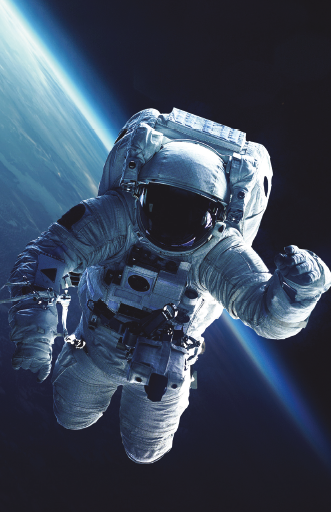OUTER SPACE
Many years ago, humanity decided to explore outer space.
This is something people had barely been able to imagine in previous centuries, in books and movies and stories grandparents told their grandchildren. However, in the 1950s, people decided they really wanted to do it. There was just one problem: how would they get there?
One of the earliest movies about flying to the moon was made by Georges Méliès and released in 1902. It was called ‘A Trip to the Moon’. In this movie, the moon was made up of a man’s face, covered in cream, and a whole tribe of angry natives lived there. That part was not very realistic. However, the spaceship didn’t seem too far-fetched: it was a small capsule, shaped like a bullet, that the astronauts loaded into a giant cannon and aimed at the moon.
This movie was based on a book that came out many years earlier by an author named Jules Verne. One fan of the book was Konstantin Tsiolkovsky, a Russian. The book made him think about whether you really could shoot people out of a cannon and have them arrive safely on the moon? He decided you couldn’t, but it got him thinking of other ways you could get people to the moon. He spent his life considering this problem and came up with many solutions.
Some of Tsiolkovsky’s solutions gave scientists in America and Russia (where Tsiolkovsky lived) ideas when they began to think about space travel. They drew-up and discussed different designs until they agreed on the ones that were the best. Then, they built small models of those designs, and tested and tested them until they felt ready to build even bigger models. They made full-scale rockets, which they launched without any people inside, to test for safety. After many, many tests, they started to send small animals into space. Only after a long time did they ever put a person inside a rocket and shoot them into space.
There is no single solution for sending a person into space. Thanks to the imaginations of people like Jules Verne and Konstantin Tsiolkovsky, and the hard work of countless scientists who built and tested rockets over the years, humanity now enjoys reliable technology for space travel.

